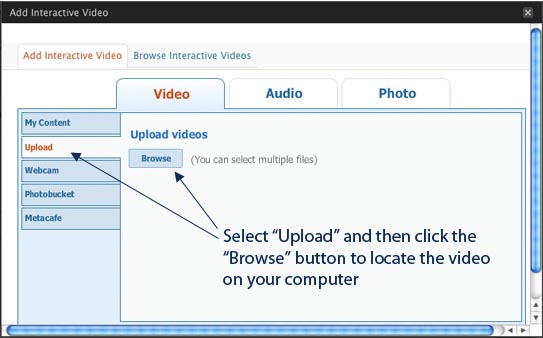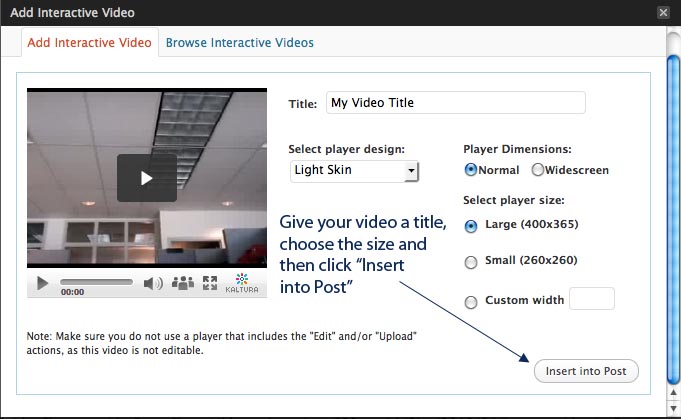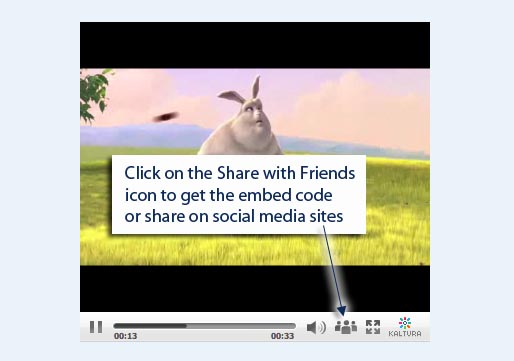4.1 – Venture Forum Resources
When we first designed ETEC522, we thought that it would be a good idea to present students with venture pitches made by real entrepreuneurs. At the time, however, it was difficult to give students the same presentation venue because of limitations of bandwidth and, in particular, hosting options for video. Things have changed quite dramatically on both counts in the last couple of years. It is now possible for anyone with a video camera and an internet connection to upload video quite easily to any number of public/private hosted locations. For the purpose of ETEC522, we would like to give you some options as to whether or not you choose to use any video presentation to make your pitch, but if you do, you will be able to upload your video right from within the course weblog and embed it in a post. There are some conditions you need to meet, however, if you are going to use video:
- You cannot upload content that does not belong to you. Most sites have fairly strict guidelines concerning intellectual property, so you need to be sure that you are clear on those policies. Each of the sites listed below has a section that outlines terms of use and intellectual property (IP) policies, and it is in your best interest to make sure that you understand what you are agreeing to before you upload your video.
- Conform to the 12 minute pitch that we’ve used throughout the Pitch Pool. In the Venture Forum, we’ll advise students to only give video pitches 12 minutes of their attention. If you can’t communicate your point within that time, you likely haven’t done enough work refining your idea and business approach.
- If you choose to use a different video hosting site to publish your video online, your video pitch needs to be linked into the ETEC522 Weblog we’ve been using throughout ETEC522 with a URL. This will help other students in the course to find your pitch and to leave their comments on it during the Venture Forum Activity. By embedding the URL created by the site that is hosting your video into our Weblog, you will be able to direct students in the course to your pitch.
Creating and editing your Video Pitch
Whether you are using a dedicated digital video camera, a web-camera on your computer, your mobile phone or even the video mode on your point-and-shoot digital camera, most if not all students in this course should have the technologies they need to create video content. If you don’t have such equipment, there is a good chance that a neighbour or colleague or, even, one of your children will have all the gear that you need! Below, we link to a few useful websites that provide tutorials and tips on creating digital video and basic video editing. Your computer may have come with the software you need, such as iMovie or Windows Movie Maker. You can do limited video editing online directly through Kaltura in the course weblog and YouTube also allows for simple video editing online. Perhaps the most important tips to keep in mind concern lighting and sound. If you use good lighting when you shoot your video (i.e., nice bright light with the subject not positioned in front of a light source like a window), you will get nice bright colours and contrast. If you record your video in a room where there is not a lot of distracting noises (hums, fan noises, barking dogs, etc.) and you have strong sound levels, your audio should be easy to hear. Finally, if possible, record your video using a tripod. This will ensure that there is not much camera-shake in your finished video.
Digital Video Tutorials
- Freevlog. This site provides a good overview of the steps you need to go through to produce videoblogs, which should provide you with the key details for acquring, editing and uploading your pitch:http://www.freevlog.org/index.php/category/tutorial/
- Blip.TV This site is described below as a potential video hosting place for your pitch. They have an excellent collection of resources on the whole process of producing video for the web in their Learning Centre:http://blip.tv/learning/
- Apple’s iMovie Tutorial site: http://www.apple.com/ilife/tutorials/#imovie
- Microsoft’s Movie Maker Tutorial Site: http://www.microsoft.com/windowsxp/using/moviemaker/getstarted/default.mspx
Fortunately, most video editing tools have export options for sharing video via the Internet, and you should use whatever options are available to you using your software to export your files. As well, the video hosting sites listed below will take care of transcoding and compressing video that is uploaded, so you don’t have to worry too much about these issues. As long as you are uploading a video file that can be read by the hosting site, it will then produce a stream that others can view on their computers.
Where do I upload my video?
UBC is currently in the process of evaluating the open source video platform, Kaltura, as a campus wide solution to upload and share videos online. For this course, Kaltura has been integrated with the course weblog so you will be able to upload and manage your videos right from within this site. All of the videos you upload will be stored on UBC servers where they can be shared on the weblog or even posted outside of the course to other social media sites. You can find out more information about the capabilities of the Kaltura integration with WordPress by visiting Kaltura’s Video and Media for WordPress page.
Adding a Video to a New Post
To upload video to the course weblog, start by creating a new post. Then, from the post editing interface, you will be able to upload the video and embed it in your post. The first step is to click on the “add interactive video” button at the top of the edit post window.

On the next screen, select on the “Upload” menu item and the click the “Browse” button to locate the video file on your computer that you want to upload.
After your video file has been uploaded, the next screen will ask you to choose a title and size for you video. After you make your selections, click on “Insert into Post” to add the video into your post. From there you will be able to finish your post in the post editing window before publishing it.
Sharing Your Video on Other Sites
To share your video on a web site outside of the course weblog, go to the post where the video has been embedded. Then, click on the “Share with Friends” icon to get the embed code for the video or share it directly to selected sites.
You can also access your video from the weblog’s Dashboard. Once you’re in the Dashboard, click on the “All in One Video” link from the “Media” menu. From there, you will see a list of all of the videos on the site. Locate your video and then click on it to preview it. You will then see the “Share with Friends” icon.




